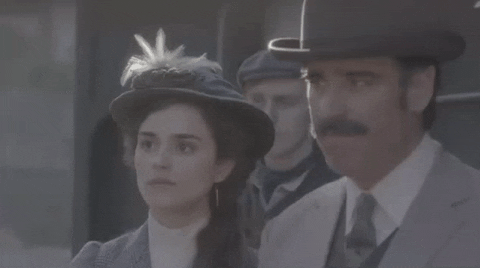
Thanks to NetGalley and to Little Brown Book Group UK, for providing me an ARC copy of this book that I freely and with some trepidation chose to review.
There is much to talk about in this book (yes, I enjoyed it, if you want the short of it. Yes, it is eerie, gothic, can be scary at times, it is full of evil deeds, some not apt for the fainthearted, and full of atmosphere), and it would also be easy to fall into revealing spoilers, so I will try to talk in general terms and will keep some of the thoughts that went through my head as I read it to myself.
Rather than trying to summarise the plot, as I have already included two versions of the blurb, I thought I’d use the author’s own words (and I recommend you to read the author’s note at the end. I suspect it will keep me thinking about this book for as long as the book itself will):
The main engines that drive the story are Jungian psychology, Central European myths and legends, the history of Czechoslovakia immediately before the Second World War and the ethnic tensions that existed within the country at that time.
This is 1939, and the author is great at bringing to life the atmosphere in Czechoslovakia at the time, the politics and the strained relationships between the different parts of the population, the ethnic minorities, the Germans, Sudeten, the Jewish inhabitants, the criminal underworld, and the increasing atmosphere of threat and impending doom and evil. He also uses the locations, both in the city, the forests, and the castle, to great effect, to the point where they almost become protagonists in their own right. I can’t say I’m familiar with any of the locations of the story despite a visit to Prague many years back, although there are some, like the Bone Church (the Sedlec Ossuary) that have intrigued me for many years, and I am sure I’m not the only one who shares in the fascination.
Having worked as a forensic psychiatrist, I could not resist the idea of reading a book set in what would have been a forensic unit of the time. And what a setting! A castle that according to legend was built to keep closed the entry to hell and that now houses the six most dangerous insane criminals of all central Europe. Both, the director of the hospital and the new doctor we meet on his way to take up his new appointment, Viktor, (no, you won’t make me tell you what happened to the previous psychiatrist in the post, don’t insist) have interesting theories to explain the madness of their patients (one akin to a contagion, like that caused by a virus, the other a similar concept to that explored and exploited often in movies and films, but in this case referring to a specific aspect of one’s personality, the so-called “Devil Aspect” of the title, rather than to multiple personalities), and the book goes into a fairly detailed explanation and exploration of those theories, including allowing us to witness the doctor’s sessions using narcotics (a very dangerous technique, I must say). I found these part of the book as fascinating, if not more, as the other part that seemed to be the more active and thrilling part of it, but I am aware that there is a lot of telling (because each one of the six devils gets a chance to tell their story), and although they help give a global picture of the nature of the evil the book refers to, not all of them seem to be directly related to the plot of the book, so guess that some readers will not feel the same as I do about those sessions.
The second part of the action, which takes place in parallel, consists of the investigation of a series of crimes in Prague, committed by a murderer, Leather Apron, who seems intent on imitating Jack the Ripper, and we follow the efforts of a police investigator Lukas Smolàk, trying to catch him. This part of the book is more akin to a police procedural of the time and is well done. It feels like a noir detective novel, only set within a gothic nightmarish background, not so dissimilar to the Victorian Ripper original. The clues are gruesome and so are the murders, and every time they seem closer to solving the crimes, something new comes to light and confuses matters. While to begin with Lukas appears to be the example of a seasoned detective who has seen everything and is wary of events in society at large, later the murders start to affect him more personally, and he becomes increasingly unravelled by the events, which humanises him and makes him easier to connect with.
The story is told in the third person but from each one of those characters’ points of view, with some brief intrusions from other characters’ insights, like one of the victims, or Judita, who is a bit more than a friend of Viktor and also works at the hospital. This works well to give us a better understanding and makes empathise, and also suffer with them, in some cases. Personally, I really liked Judita, who has to face prejudice and has overcome her own mental health difficulties, and also Lukas, who shares with Viktor the determination to find the truth, and the analytical mind. I was intrigued by Viktor, not only because he is a psychiatrist, but because we learn from early on that he has survived a pretty difficult childhood and has had to cope with trauma. But his single-mindedness and his pursuit of his theory, sometimes despite the evident risks, not only to himself but to others, give him a tinge of the mad scientist, and I found him more interesting as a subject of observation than as somebody I felt connected to.
The Central and Eastern European mythology and the Jungian psychology theme add a further layer of complexity and work well in helping bring more uncertainty, menace, and confusion to the proceedings. There are dark corners and many secrets hidden by most of the protagonists; there are clues and warnings aplenty, red herrings, twists and turns, and although readers of the horror and the psychological thriller genres might have their suspicions and a variety of theories as to what is going on, a bit like the layers of the personality Viktor tries to reach, the narration also pulls us deeper and deeper into the darkness, the plot, and the castle, which is a physical stand-in for the deepest recesses of the human mind and also of human history.
I don’t want to bore you with my psychiatric insights, but I can say that although I’m not an expert in the history of psychiatry in Central Europe, the procedures followed in the castle, the way the place functions and the patient histories did not require a great suspension of disbelief. (Yes, I have known patients who have experienced a fugue-like state. No, I’ve never met anybody with multiple personalities or dissociative identity disorder, and I don’t think it is a common diagnosis in the UK, but…)
I enjoyed the style of writing, full of vivid imagery and very atmospheric, which makes us see what is happening in our minds (sometimes even when we’d rather not), and felt the rhythm worked well, combining the investigation, that felt more pressing and hurried, with what was happening at the castle, that at least, to begin with, was more contemplative and serene. The closer we come to the end, the more the rhythm accelerates and both strands of the story come together. As I said, there is a twist, or even more than one, in the end, and I think this book has everything to recommend it to readers of the genre who also enjoy a gothic setting and are eager to explore new mythologies regarding good an evil. This is not a book I’d recommend to those who don’t enjoy horror and reading about violent crimes. And it is not a book for those who prefer books fast and full of action, but it pays to stick with it, and if you’re interested in psychiatry and are looking for a different twist on the serial killer subject, I thoroughly recommended.
I am not surprised film production companies are looking at buying this book. This could become a fascinating movie.





 Log in with Facebook
Log in with Facebook 










